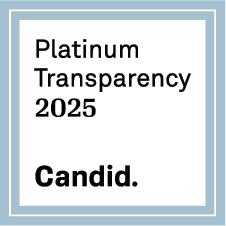Your gift is 100% tax deductible
Does Breast Pain Mean Cancer?
Breast pain is called mastalgia or mastodynia. It can be a sign of something serious, but it is not usually a sign of cancer. Pain in the breast can happen in men and women, and sometimes in children and teenagers. In fact, it’s quite common for everyone to feel discomfort in their breasts at different times in their life.
What causes breast pain?
There are many reasons you could feel pain in or around a breast or both breasts. The most common cause of breast pain is related to hormonal changes. There are also several other causes of breast pain that are not due to cancer.
Common causes of breast pain
- Hormonal changes: This can be caused by your menstrual cycle, birth control pills, or hormone treatments.
- Pregnancy and breastfeeding: Being pregnant and breastfeeding can cause your breasts and nipples to be tender and painful.
- Ill-fitting bra: A bra that doesn’t fit well can cause discomfort.
- Injury: You might feel pain after an injury or trauma to your breast.
- Infection: Infection within the breast is usually called mastitis. It can cause your breasts to become sore, swollen, or reddened.
- Non-cancerous breast conditions: Some non-cancerous breast conditions like cysts, fibrosis, and other benign (non-cancerous) tumors may cause pain or tenderness.
Keeping track of your breast pain
Keeping track of when your breast pain happens is important because it uncovers patterns that help your health care team identify the cause of your breast pain. These patterns can be either cyclical or non-cyclical.
Cyclical breast pain
Cyclical breast pain happens in cycles. It can be felt in one or both breasts and described as tenderness, swelling, or a feeling of heaviness.
For example:
- Your breasts may become tender in the days before you start your monthly period. During a normal menstrual cycle, your hormone levels are higher in the days leading up to your period. When your period starts, your hormone levels decrease and the pain goes away until the next cycle.
- Using birth control pills or other hormonal treatment given in cycles can cause breast soreness that comes and goes regularly. This happens because of changing hormone levels.
Non-cyclical breast pain
Non-cyclical breast pain can be constant, but it may also come and go over time. It’s usually described as being in one area of the breast, chest, or armpit. This type of breast pain is not related to a menstrual cycle.
Can breast pain be a sign of breast cancer?
Most breast cancers don’t cause pain in the breast or nipple. But some do. If breast cancer causes pain, it is generally a constant, non-cyclical pain that lasts more than a few weeks.
What to watch for
Signs and symptoms of breast cancer include feeling pain in the area of the tumor, or in other parts of the breast and armpit. Sometimes a mass or lump can be felt, but not always. If pain is felt, it might be described as feeling soreness or tightness, burning, prickling, or a stabbing sensation in a specific area.
What to do
Know your breast cancer risk: For women, it’s important to know your breast cancer risk. There are some breast cancer risk factors you can’t change, like family history and age. But there are some risk factors you can control.
Get regular screening: It’s also important for women to follow breast cancer screening recommendations. Getting regular screening can help find problems in your breasts that may or may not be cancer. Some of these conditions and some breast cancers may cause breast pain.
When should I worry about breast pain?
Frequent or recurring breast pain can be worrisome. It can also interfere with your everyday activities and quality of life. It can cause sleep problems, sexual concerns, and difficulty doing certain exercises and activities.
But breast pain that doesn’t go away can point to an underlying condition. Talk to your doctor or a health care professional if:
- You have breast pain that is constant OR
- Your breast pain comes and goes at times other than during a menstrual cycle
Your health care team may do more testing so they can figure out the underlying cause and treat or manage it. You might need some mild pain medicine, or you can use other methods to help manage your breast pain. Ask your health care team what may work best for you.
If a more serious condition is found, you can work with your doctor to get the treatment and care you need.
Your breast health
Breast health includes getting regular checkups and watching for changes in how your breasts look and feel.
Everyone should become familiar with their breasts. Report any changes to your health care team right away.
- Written by
- References

The American Cancer Society medical and editorial content team
Our team is made up of doctors and oncology certified nurses with deep knowledge of cancer care as well as editors and translators with extensive experience in medical writing.
Banikarim C, De Silva NK. Breast disorders in children and adolescents. UpToDate. 2024. Available at https://www.uptodate.com/contents/breast-disorders-in-children-and-adolescents
Bui AH et al. An image-rich educational review of breast pain. Journal of Breast Imaging. 2024;6(3):311-326.
Golshan M. Breast pain. UpToDate. 2025. Available at https://www.uptodate.com/contents/breast-pain
Rotbart N, et al. Revisiting the need for breast imaging in young women with clinically significant breast pain and a normal physical breast examination. Breast Care. 2025; doi.org/10.1159/000543437
Last Revised: February 24, 2025
American Cancer Society medical information is copyrighted material. For reprint requests, please see our Content Usage Policy.
American Cancer Society Emails
Sign up to stay up-to-date with news, valuable information, and ways to get involved with the American Cancer Society.



